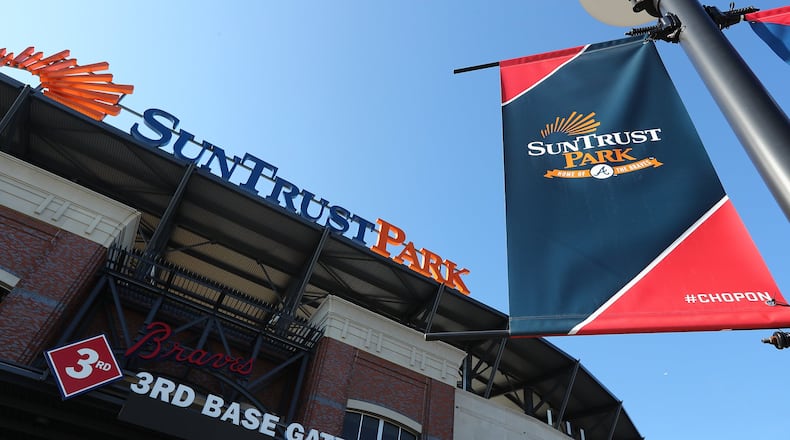Cobb taxpayers spent less on SunTrust Park last year than they did for the Braves’ opening season at the new stadium, but the county is still in the red on its largest investment in history.
The county paid $5.8 million out of its general fund for debt service and stadium expenses in 2018. That’s down from more than $8 million in 2017, due mostly to growth in The Battery, the residential and entertainment complex adjacent the ballpark.
The numbers were provided by the county and do not include sales tax collected at the stadium, which does not flow to the general fund. Aside from the general fund, the county is paying more than $10 million a year toward the stadium using other taxes and fees.
“We are still using money from the taxpayers’ wallet to live up to our commitments under this agreement with the Braves, but we’re asking less of it every year,” said county Chairman Mike Boyce. He said the county was not taking into account any growth outside The Battery.
Meanwhile, the Braves' profit surged to $94 million for the same year.
Boyce credited the county with cutting costs, including striking a deal with the hotels to put more tourism dollars toward police overtime at the stadium.
But the biggest difference was a sharp increase in taxable property inside The Battery, causing a bump to revenue collection.
“Obviously it’s not going to continue at that rate because we had a lot of things come online last year,” said Cobb Finance Director Bill Volckmann. Nevertheless, he said, the county’s share of the cost has come down, a trend he expects to continue.
Victor Matheson, a sports economist at the College of the Holy Cross in Massachusetts, called the latest SunTrust Park numbers a “step in the positive direction” but cautioned that the booming economy nationwide has helped alleviate, for now, pressure on local government budgets.
“We’ve had multiple examples of other stadiums that have looked pretty good when the country as a whole or the local economy looks good, but as soon as there’s a downturn, all of a sudden there’s debts you have to pay versus police officers and firefighters that you could lay off,” Matheson said. “If this is really a good deal you should be well above break even for a hundreds-of-millions-of-dollars investment.”
Local public funds accounted for $392 million of the up-front construction costs for the stadium, in addition to $35 million in capital maintenance over 30 years. The Braves were obligated to pay at least $230 million in construction costs on the front end, and will reimburse Cobb an estimated $92 million through rent payments over the next three decades.
Cobb has paid millions for more infrastructure in and around the stadium, and despite negotiating with the hotel owners to shift some of the burden of public safety the stadium, the county is still paying about $600,000 annually for police overtime.
Steve Gaynor, head of the local police union, said the county should not have agreed to foot the bill for security outside the stadium. But the taxpayers' loss has been some officers' gain, even as the department struggles to attract and retain recruits.
“The guys who are near retirement are going to soak up that Braves money because it’s on-duty overtime and it pads their retirement,” Gaynor said. “At this point, as we continue to lose staffing, we’re going to increase our overtime at the actual precincts.”
About the Author
Keep Reading
The Latest
Featured




